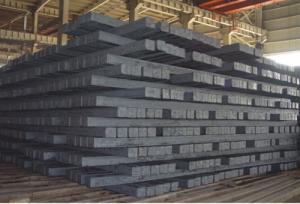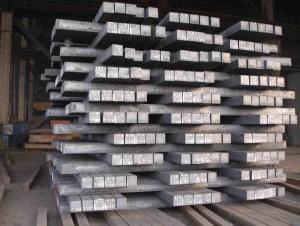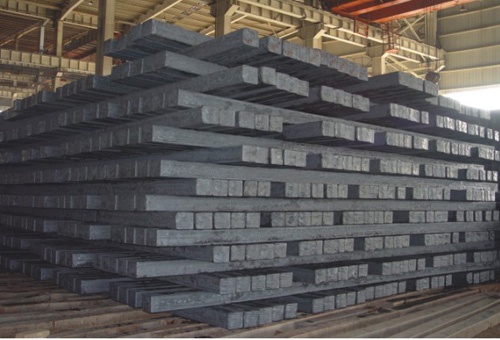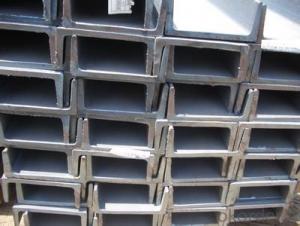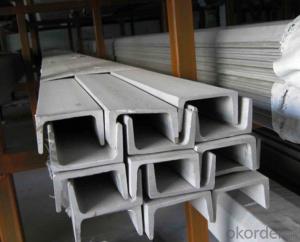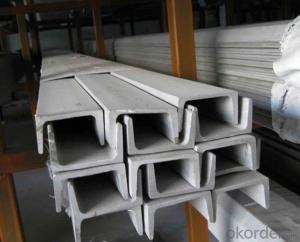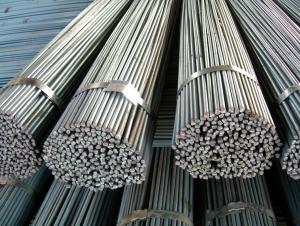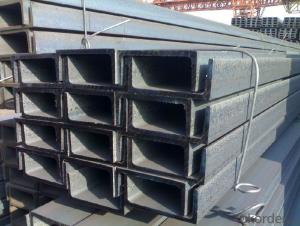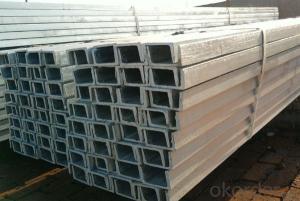JIS U Channel 50-300MM Hot Rolled EN10025JR High Quality
- Loading Port:
- Shanghai
- Payment Terms:
- TT or LC
- Min Order Qty:
- 25 m.t.
- Supply Capability:
- 20000 m.t./month
OKorder Service Pledge
OKorder Financial Service
You Might Also Like
Product Description:
OKorder is offering high quality Hot Rolled Steel I-Beams at great prices with worldwide shipping. Our supplier is a world-class manufacturer of steel, with our products utilized the world over. OKorder annually supplies products to European, North American and Asian markets. We provide quotations within 24 hours of receiving an inquiry and guarantee competitive prices.
Product Applications:
According to the needs of different structures, Angle can compose to different force support component, and also can be the connections between components. It is widely used in various building structures and engineering structures such as roof beams, bridges, transmission towers, hoisting machinery and transport machinery, ships, industrial furnaces, reaction tower, container frame and warehouse etc
Product Advantages:
OKorder's Steel I-Beams are durable, strong, and resist corrosion.
Main Product Features:
· Premium quality
· Prompt delivery & seaworthy packing (30 days after receiving deposit)
· Corrosion resistance
· Can be recycled and reused
· Mill test certification
· Professional Service
· Competitive pricing
Product Specifications:
Manufacture: Hot rolled
Grade: Q195 – 235
Certificates: ISO, SGS, BV, CIQ
Length: 6m – 12m, as per customer request
Packaging: Export packing, nude packing, bundled
Sizes: 25mm-250mm | ||||||||||||
a*t | ||||||||||||
25*2.5-4.0 | 70*6.0-9.0 | 130*9.0-15 | ||||||||||
30*2.5-6.6 | 75*6.0-9.0 | 140*10-14 | ||||||||||
36*3.0-5.0 | 80*5.0-10 | 150*10-20 | ||||||||||
38*2.3-6.0 | 90*7.0-10 | 160*10-16 | ||||||||||
40*3.0-5.0 | 100*6.0-12 | 175*12-15 | ||||||||||
45*4.0-6.0 | 110*8.0-10 | 180*12-18 | ||||||||||
50*4.0-6.0 | 120*6.0-15 | 200*14-25 | ||||||||||
60*4.0-8.0 | 125*8.0-14 | 250*25 | ||||||||||
FAQ:
Q1: Why buy Materials & Equipment from OKorder.com?
A1: All products offered byOKorder.com are carefully selected from China's most reliable manufacturing enterprises. Through its ISO certifications, OKorder.com adheres to the highest standards and a commitment to supply chain safety and customer satisfaction.
Q2: How do we guarantee the quality of our products?
A2: We have established an advanced quality management system which conducts strict quality tests at every step, from raw materials to the final product. At the same time, we provide extensive follow-up service assurances as required.
Q3: How soon can we receive the product after purchase?
A3: Within three days of placing an order, we will begin production. The specific shipping date is dependent upon international and government factors, but is typically 7 to 10 workdays.
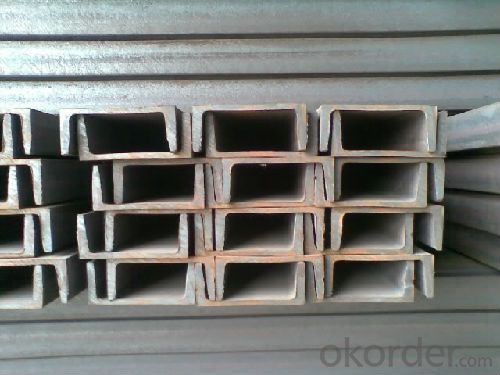
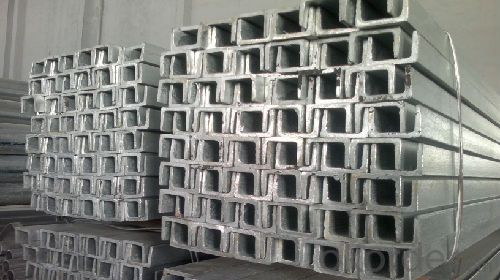
- Q: How do steel billets contribute to the overall vibration resistance of a product?
- Steel billets are an essential component in enhancing the overall vibration resistance of a product. The high-strength properties of steel make it an ideal material for reducing vibrations and improving product stability. Steel billets are typically used as a raw material in the manufacturing process, where they are further processed into various shapes and forms. The dense and uniform structure of steel billets allows them to absorb and dissipate vibration energy effectively. When integrated into a product, steel billets provide additional mass, which helps dampen vibrations by absorbing and distributing the energy throughout the structure. This mass acts as a stabilizing force, preventing excessive movement and reducing the amplitude of vibrations. Moreover, steel billets possess excellent mechanical properties, such as high tensile strength and stiffness, which contribute to the overall vibration resistance of a product. These properties enable steel billets to withstand dynamic forces and resist deformation under vibration, ensuring the structural integrity of the product. Additionally, steel billets can be engineered to have specific geometries and cross-sectional shapes that further enhance their vibration resistance. For example, the use of round or square billets with smooth surfaces minimizes stress concentration points and reduces the risk of fatigue failure. By optimizing the design and dimensions of steel billets, manufacturers can tailor the vibration resistance of a product to meet specific requirements. In summary, steel billets play a crucial role in improving the overall vibration resistance of a product. Their high mass, dense structure, and superior mechanical properties enable them to absorb and dissipate vibration energy, stabilize the product, and enhance its structural integrity. By utilizing steel billets in the manufacturing process, manufacturers can ensure that their products are more resistant to vibrations, leading to improved performance and longevity.
- Q: What are the different types of steel billet handling equipment?
- In the steel production process, a variety of steel billet handling equipment is utilized. These equipment are specifically designed to efficiently transport and move steel billets, which are semi-finished metal products utilized for further processing. 1. Overhead Cranes: Steel mills and foundries often employ overhead cranes for handling and transporting steel billets within their facilities. These cranes possess a high lifting capacity, allowing for seamless movement of billets from one location to another. 2. Mobile Cranes: Offering versatility, mobile cranes can handle steel billets in both indoor and outdoor settings. Equipped with hydraulic systems, these cranes excel at lifting and maneuvering heavy loads. 3. Forklifts: Warehouses and storage facilities frequently rely on forklifts for the handling of steel billets. These machines feature front forks that can be raised or lowered to lift and move the billets. 4. Grab Buckets: Specifically designed for bulk materials, including steel billets, grab buckets feature a bucket-like structure that can be opened and closed to securely grip and release the billets. They are commonly employed at ports and shipping yards for the loading and unloading of billets from ships. 5. Conveyor Systems: Conveyor systems provide continuous movement of steel billets along a predetermined path. They facilitate the transportation of billets between different stages of the production process or for loading and unloading from trucks or trains. 6. Roller Tables: Utilized for transferring steel billets from one conveyor or machine to another, roller tables consist of a series of rollers that allow for smooth and controlled movement of the billets. 7. Magnetic Lifters: Magnetic lifters utilize an electromagnetic field to lift and transport steel billets, making them highly effective for handling ferrous materials. This magnetic force ensures secure gripping and effortless movement. 8. Palletizers: Palletizers are employed to stack and organize steel billets on pallets. Capable of automatically arranging billets in a specific pattern, they are ideal for storage or transportation purposes. Each type of equipment offers unique advantages and is specifically utilized based on the requirements of the steel production process. Factors such as billet size and weight, required transportation distance, and facility-specific needs determine the appropriate handling equipment selection.
- Q: How are steel billets used in the manufacturing of structural steel?
- Steel billets are a crucial raw material in the manufacturing of structural steel. They are heated, shaped, and then cooled to form various steel products such as beams, columns, and plates. These billets serve as the starting point for the production process, where they are further processed and transformed into different shapes and sizes to meet the specific requirements of construction projects.
- Q: Can steel billets be used for making furniture?
- Yes, steel billets can be used for making furniture. Steel billets are typically the raw material used in the production of steel bars, rods, and other steel products. With the right equipment and manufacturing processes, steel billets can be transformed into various furniture components such as table frames, chair legs, or even entire steel furniture pieces. Steel furniture is known for its durability, strength, and modern aesthetic appeal. However, it is important to note that steel furniture may require additional treatments such as painting or powder coating to prevent corrosion and enhance its visual appearance.
- Q: What is the role of steel billets in the construction of dams and reservoirs?
- The role of steel billets in dam and reservoir construction cannot be overstated. These semi-finished steel products are vital for manufacturing various components and structures necessary for the construction process. A primary application of steel billets in dam and reservoir construction is their use in producing reinforced concrete. Reinforced concrete combines the strength and durability of steel with the versatility and moldability of concrete. Steel billets are utilized to create steel reinforcement bars, commonly called rebars, which are embedded within the concrete to improve its tensile strength and prevent cracking when subjected to heavy loads. These rebars provide the necessary structural support for the dam or reservoir, ensuring its stability and long life. Furthermore, steel billets are essential for fabricating gates, penstocks, and other mechanical components required for dams and reservoirs. These components play a crucial role in regulating water flow, controlling water levels, and managing the release of water from the reservoir. Steel billets are forged, rolled, or machined to manufacture these specialized components, guaranteeing their strength, reliability, and resistance to corrosion. Moreover, steel billets are indispensable in constructing spillways, which are designed to safely discharge excess water from reservoirs during periods of heavy rainfall or floods. Spillway gates, channels, and other structures are often made from steel billets because they need to withstand high water pressure and turbulent flow conditions. To summarize, steel billets are vital in dam and reservoir construction. They are instrumental in producing reinforced concrete, thereby providing structural support and enhancing the overall strength of the structure. Steel billets are also used in the production of gates, penstocks, spillways, and other mechanical components, ensuring the efficient operation and long-term durability of these crucial water management infrastructures.
- Q: What is the global production and consumption of steel billets?
- Steel billets play a crucial role in the worldwide construction and manufacturing sectors, with their production and consumption being of great significance. When it comes to manufacturing, several countries are major players in the production of steel billets. China, the largest producer of steel globally, contributes significantly to the global steel billet production. Other notable producers include India, Japan, Russia, the United States, and Turkey. These countries have well-established steel industries and infrastructure to support large-scale production. The consumption of steel billets is driven by the demand for steel products in various sectors. The construction and infrastructure development sectors are the primary drivers, as steel is widely used in the construction of buildings, bridges, roads, and other structures. The automotive industry is also a major consumer, utilizing steel billets for manufacturing automobile parts and components. Providing an exact figure for global steel billet production and consumption is challenging due to the ever-changing market dynamics and varying industry reports. However, it is estimated that global steel production exceeded 1.8 billion metric tons in 2020, with a significant portion of this production in the form of steel billets. The consumption of steel billets is closely linked to overall steel demand, which is influenced by economic growth, infrastructure development, industrial activity, and construction projects worldwide. In conclusion, the global production and consumption of steel billets are of great significance, highlighting the importance of steel as a vital material in various industries. The continuous growth in infrastructure development and industrialization globally is expected to further drive the production and consumption of steel billets in the years to come.
- Q: How are steel billets used in the manufacturing of valves and pumps?
- Steel billets are an essential raw material used in the manufacturing of valves and pumps. Billets are semi-finished steel products that are cast into a specific shape, usually in the form of a square or a rectangle. These billets serve as the starting point for the production of valves and pumps. To manufacture valves, steel billets are first heated and then forged or rolled into the desired shape. The billets undergo a series of processes such as cutting, drilling, and machining to form the various components of a valve, including the body, bonnet, disc, stem, and seat. These components are then assembled to create the valve, which regulates the flow of fluids or gases in a system. Similarly, in the manufacturing of pumps, steel billets are heated and shaped into the necessary parts such as impellers, casings, shafts, and housings. These components are then assembled to create a pump, which is responsible for moving fluids or gases from one place to another. The use of steel billets in the manufacturing of valves and pumps is crucial due to the inherent properties of steel. Steel is known for its strength, durability, and resistance to corrosion, making it ideal for applications in industries where valves and pumps are subjected to high pressures, temperatures, and corrosive environments. Furthermore, the versatility of steel allows for customization, enabling manufacturers to create valves and pumps of various sizes, shapes, and specifications to meet the specific needs of different industries and applications. This adaptability ensures that valves and pumps made from steel billets can perform reliably and efficiently in a wide range of environments and conditions. In conclusion, steel billets play a vital role in the manufacturing of valves and pumps. Through the forging, shaping, and assembly processes, steel billets are transformed into the essential components that make up these crucial industrial devices. The use of steel ensures the strength, durability, and corrosion resistance required for valves and pumps to function effectively and withstand demanding operating conditions.
- Q: How are steel billets used in the production of aerospace components?
- Steel billets are used in the production of aerospace components as they serve as the raw material for various manufacturing processes. These billets are typically forged or machined to create the desired shape and size of the aerospace component. Additionally, their high strength and durability make them suitable for withstanding the extreme conditions and rigorous demands of aerospace applications.
- Q: What are the different types of steel billet rolling techniques?
- There are several different types of steel billet rolling techniques used in the manufacturing process. These techniques are employed to shape the steel into desired forms and dimensions. Some of the commonly used techniques include: 1. Hot rolling: This is the most widely used technique where the steel billet is heated to high temperatures and then passed through a series of rolling mills. The hot rolling process helps in reducing the thickness and increasing the length of the steel billet. 2. Cold rolling: In this technique, the steel billet is rolled at room temperature. It is used to produce steel with a smooth surface finish and precise dimensions. Cold rolling is often used for producing steel sheets, strips, and bars. 3. Ring rolling: This technique is used to produce seamless rings of steel. The steel billet is heated and then rolled between two rotating rolls, which gradually shape the billet into a ring. Ring rolling is commonly used in the production of bearings, gears, and flanges. 4. Continuous casting and rolling: This technique involves the continuous casting of molten steel into billets, which are then directly rolled into desired shapes. Continuous casting and rolling eliminate the need for separate casting and rolling processes, making it a more efficient and cost-effective technique. 5. Cross-rolling: Cross-rolling is used to produce steel billets with non-uniform cross-sections. The billet is rolled between two rolls that have different profiles, resulting in a billet with a desired shape. 6. Skew rolling: Skew rolling is a technique used to produce steel balls used in various industries, such as mining and cement production. The steel billet is rolled between two rotating rolls at an angle, which creates a helical motion and forms the ball shape. These are just a few examples of the different types of steel billet rolling techniques. Each technique has its own advantages and is used based on the desired final product and manufacturing requirements.
- Q: How are steel billets cooled after the manufacturing process?
- Steel billets are typically cooled after the manufacturing process using methods such as air cooling, water quenching, or accelerated cooling techniques.
Send your message to us
JIS U Channel 50-300MM Hot Rolled EN10025JR High Quality
- Loading Port:
- Shanghai
- Payment Terms:
- TT or LC
- Min Order Qty:
- 25 m.t.
- Supply Capability:
- 20000 m.t./month
OKorder Service Pledge
OKorder Financial Service
Similar products
Hot products
Hot Searches
Related keywords
